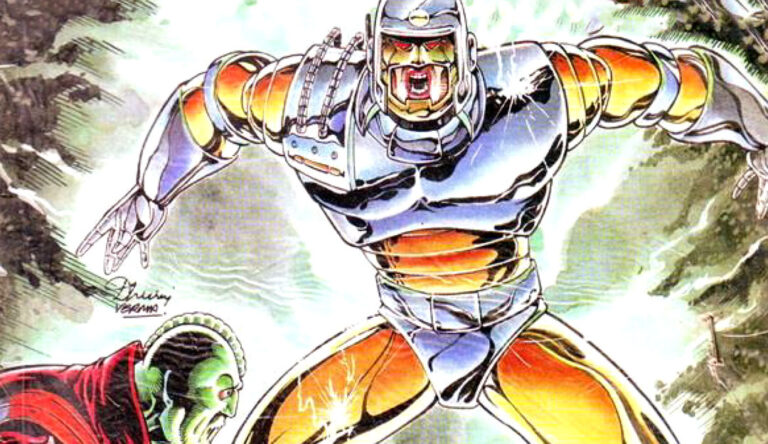‘Inspector Steel’ is a police officer whose mind is human, but his body is completely as strong as iron. Steel comics have been famous for their fast pace, mystery and powerful action. The comics we are going to talk about today is “Dial 100”, printed under General Comics (GENL-0801), which is written by Hanif Azhar and the pictures are made by Naresh Kumar. This comic is not just a superhero story, but also a sharp taunt on the system—the system, one mistake of which can turn a common man into a dangerous criminal.
A cocktail of mystery, adventure and panic
The story of “Dial 100” begins with a very simple and everyday occurrence. A call comes to the police control room, in which it is told that a theft has taken place in a temple. A police team reaches there immediately, but they do not find anything suspicious. They think someone is joking. But as soon as they start returning, suddenly something happens that no one expected. The entire team is killed by high-voltage current running through the wet floor of the temple.
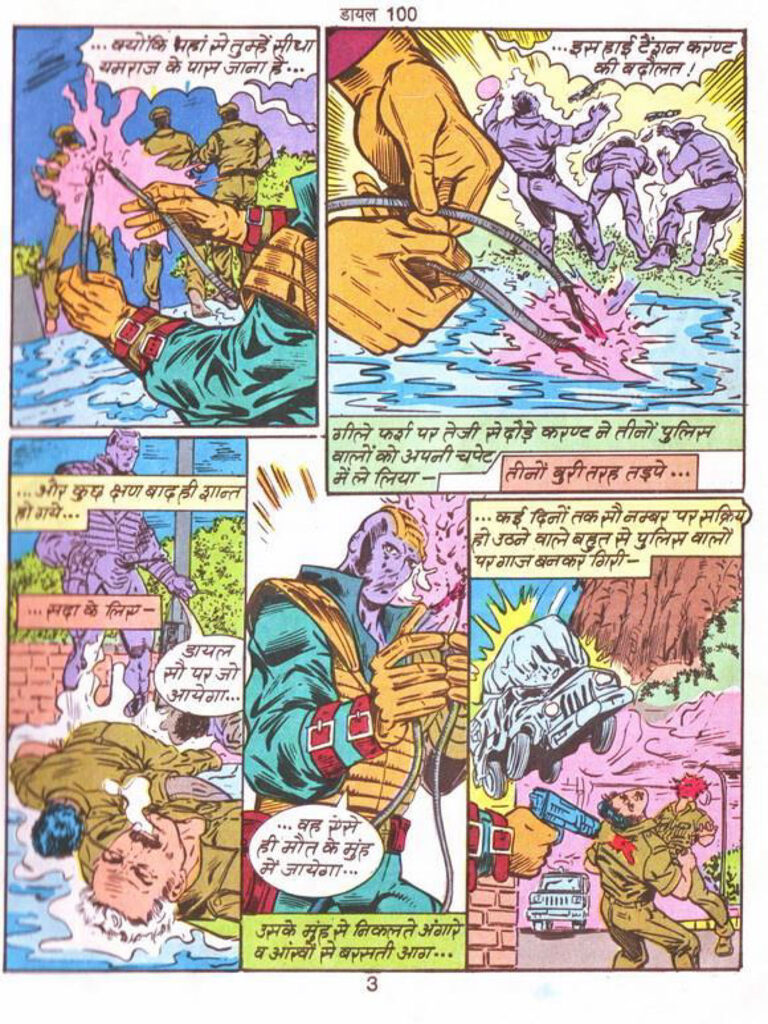
This was not a one-time thing. Soon it becomes a pattern. In Rajnagari, ‘Dial 100’ becomes another name for death for policemen. An unknown man calls police teams to empty spaces by making fake calls and kills them by luring them into dangerous traps already set up. The continuous attacks on the city guards create fear in the entire police department. The morale of the police starts breaking down.
At such a time, the Police Commissioner gives this case to his most trusted and intelligent officer, Inspector Steel. Steel is accompanied by his brave companion, Sub-Inspector Salma. The story takes the form of a fast-paced thriller from here. The criminal then makes a call—this time of a dead body lying in a deserted street. Steel and Salma get there. As Salma tries to lift the corpse, Steel’s robotic sensors detect a powerful pressure bomb hidden beneath the corpse. Steel saves Salma from a terrible blast by shielding his steely body.
It was now clear that there was only one cunning and dangerous mind behind all these murders, and it had only one motive: to kill the policemen. Steel uses his sharp surveillance and understanding to conclude that the criminal has a deep-rooted feud with the police department. While investigating, they reach three people in the last two years who had filed a case against the department due to the damage caused by the late arrival of the police despite calling ‘Dial 100’.
The story takes a big turn when a greedy constable of the police department, lured by some money, informs the criminal about the investigation of Steel. But the criminal is so cruel that he even kills that traitorous constable, to show that he will not spare anyone who comes in his way.
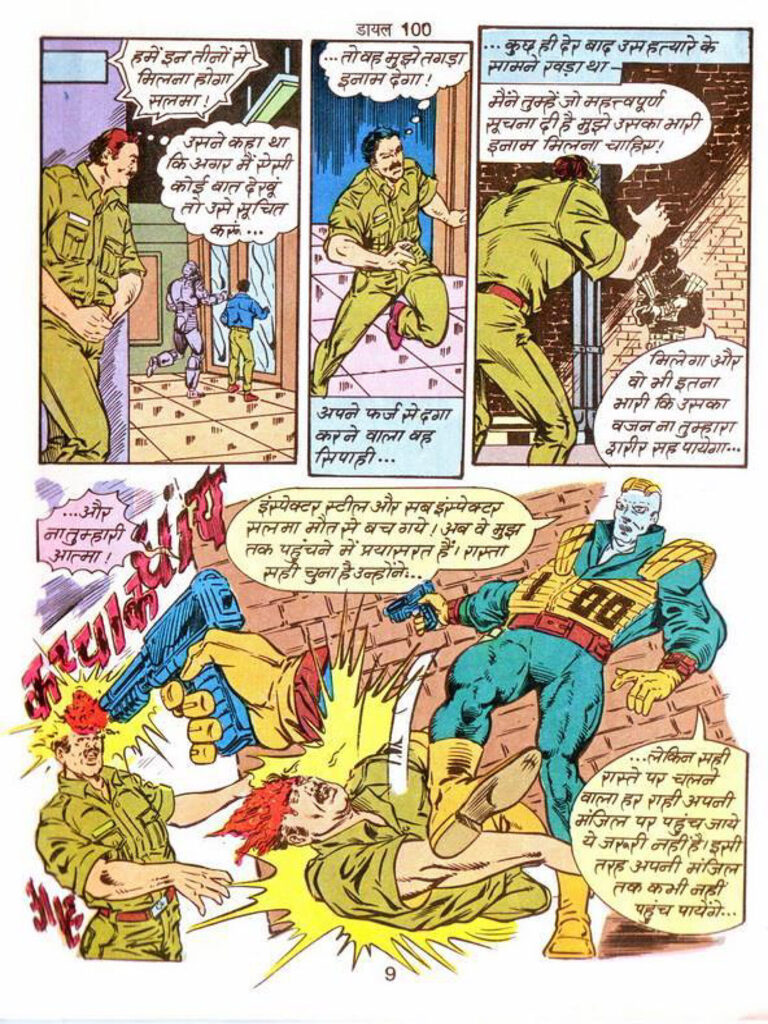
Steel and Salma decide that they will meet the three suspects one by one. The first suspect, businessman Mehta, is found tied up in his own home with his entire family. The criminal had guessed that Steel would be there, so he had already laid this trap. The other suspect, Jagdish, is found tied to his chair with a time bomb. Here the criminal puts Steel in a predicament—if he wants, he can save Jagdish or chase the criminal. But Steel saves Jagdish with the help of his tremendous abilities. The story of both the suspects turns out to be the same, the delay of the police had completely ruined their lives.
Eventually, all the clues lead Steel to the third and last suspect, Professor Verma. Professor Verma was actually that dangerous criminal “Mr. 100”. Verma tells his painful story in the climax. A few years ago there was a fire in his house. He called ‘Dial 100’, but the police and fire brigade arrived too late, and before his eyes his entire family was burned to death in the fire. The accident turned a respected professor into a mentally broken, heartless killer with the same motive of ruining the police system he held responsible for his family’s death.
Characterization: Heroes, Villains and Humanity
Inspector Steel: Steel is the mainstay of this story. He is a form of law and order that combines both the human mind and the power of the machine. He works more on logic than emotions, and his robotic abilities put him far above ordinary humans. But when he turns himself into a shield to save Salma, the humanity and responsibility inside him is clearly visible. He is a perfect crime-fighting machine as well as a good human being.
Sub-Inspector Salma: Salma is Steel’s human companion. She is brave, understanding, but at the same time she has the weaknesses of being a normal human being. In the story, she works to connect the reader to a world like a steel machine. Her nervousness and helplessness in the pressure bomb scene show the real danger that every policeman faces in the line of duty.
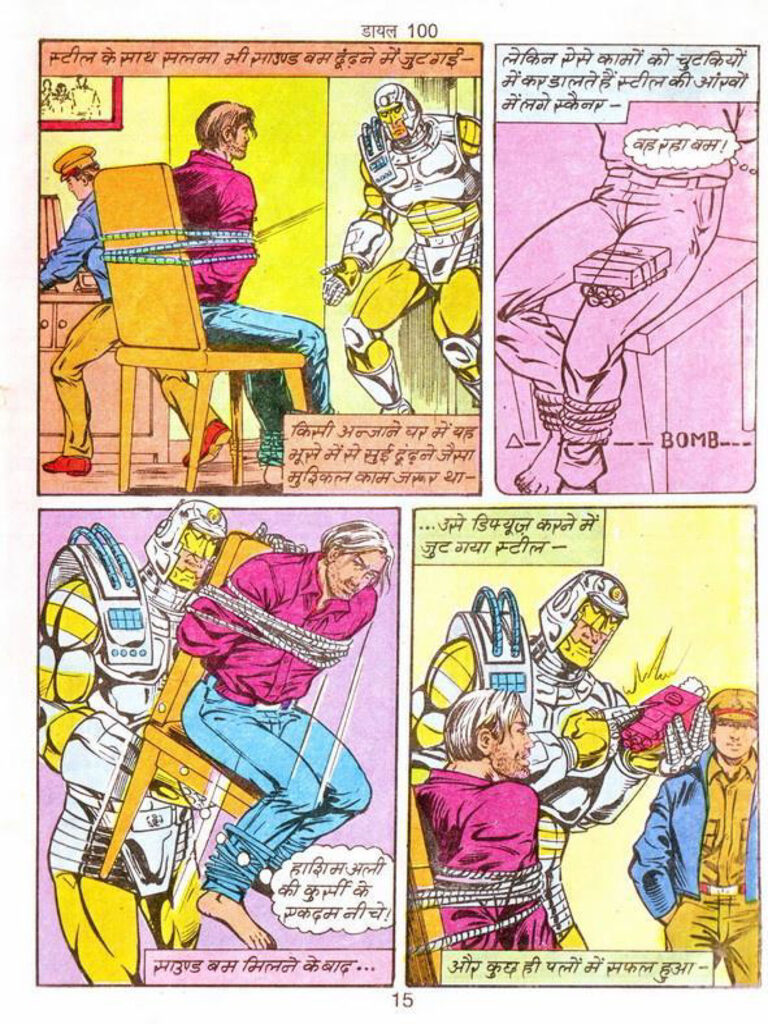
Mr. 100 (Professor Verma): The greatest strength of this comic is its villain. Hanif Azhar has not just made him a simple villain, but has given him a sad, tragic character. He was not bad by birth; the system’s mistake and his personal tragedy made him a monster. His motivation is understandable, even though his methods are extremely cruel. That’s what makes him a villain who is both hated and slightly sympathetic.
Art and Presentation
Naresh Kumar’s art is a special identity of the golden era of Raj Comics. There is so much energy and movement in his artwork that every action, every thrill of the story feels clear. The distribution of panels handles the pace of the story very well. Be it the current-spreading scene in the temple, the tense moment of defusing the bomb, or the last clash of Steel and Mr. 100—each scene is very beautifully drawn. Calligraphy (T.R. Azad) and editing (Manish Gupta) make this comic a complete, fun and memorable experience.
Topics and social commentary
“Dial 100” is not just an action comic. It also says something deep about the system of its time.
Failure of the system: The basic message of the story is that if help does not arrive on time in an emergency, how terrible the damage can be. The entire comic revolves around this issue.
Justice vs. Revenge: This comic shows how thin the line is between justice and revenge. Professor Verma wanted justice, but when he did not get justice from the system, he started on the path of revenge, and from there his downfall started.
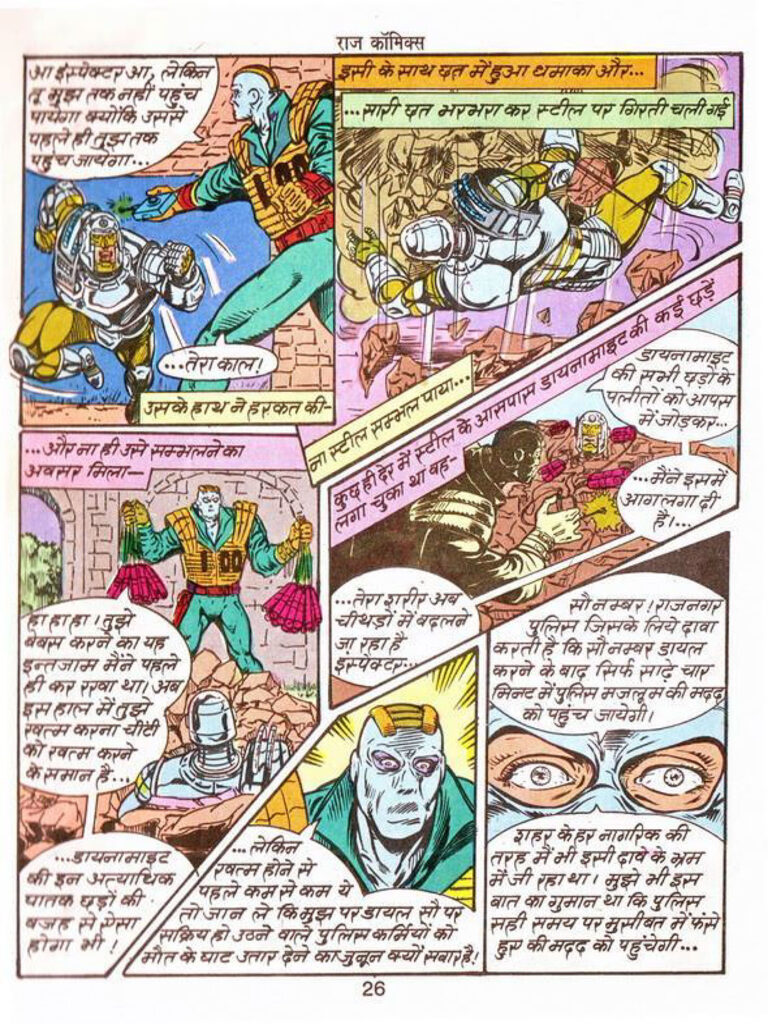
Human vs. Machine: Inspector Steel is half human and half machine. He symbolizes the ideal system in which human mistakes do not occur. On the other hand, Mr. 100 is the human being who was ripped apart by the mistakes of the human system. This confrontation also gives the story a deeper thought.
Conclusion
“Dial 100” is such a precious gem of Raj Comics’ treasure that it is equally fun to read even today. Its strong script, persistent mystery, and a villain whose story touches the heart are all reasons why this comic is equally effective and entertaining today. The pair of Hanif Azhar and Naresh Kumar together have given a story that keeps the reader engaged from beginning to end. It is not just a combination of action and science, but it also has a very effective depiction of human emotions, pain and suffering, and system deficiencies.
If you are a fan of Indian comics or like to read a good thriller story, then you must read Inspector Steel’s “Dial 100”. This will take you back to a time when Raj Comics stories not only gave fun but also made you think.
